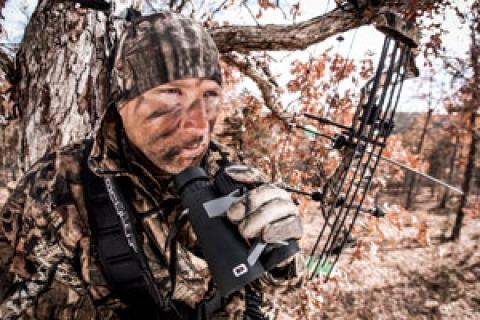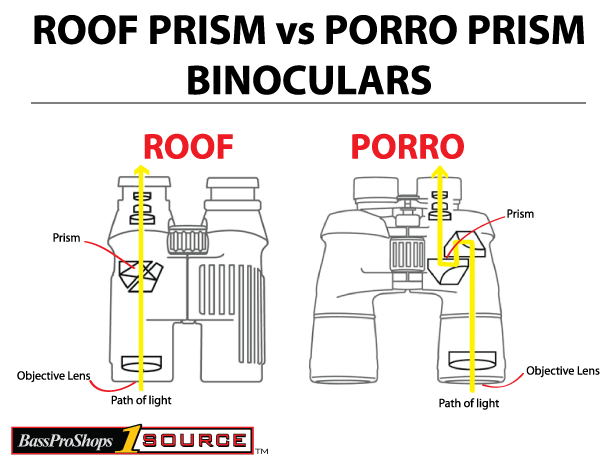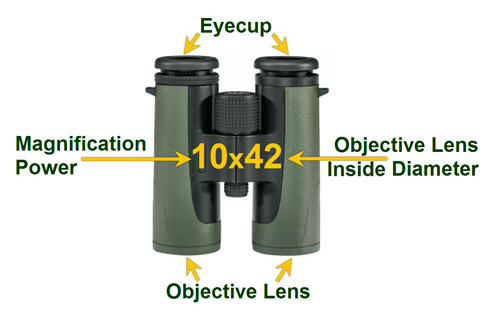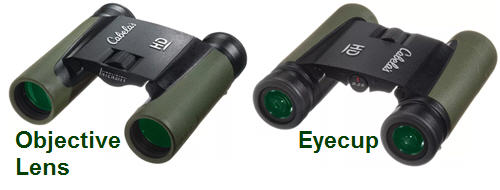
On any big game hunting trip, and on many outings for small game and waterfowl as well, next to your rifle, shotgun or bow, a good pair of binoculars may be the most important piece of equipment you bring.
Although most hunters have scopes on their rifles, you can't — and shouldn't glass with a scoped rifle. Not only is it dangerous (remember, there's a rifle sitting underneath that scope and what you're seeing could be another person), but there's simply no need when there are so many good binoculars available at reasonable prices.

Binocular Buying Guide
There are a lot of different models of binoculars to choose from, and selecting the right one for you may seem difficult. Here's a binocular buying guide to learn what you need to know, including some of the terms used in the optics industry and what they mean for you.
Porro Prism Versus Roof Prism Binoculars

Binoculars come in a wide variety of sizes, magnifying powers and features, but they all utilize either a Porro prism system or a roof prism system, which refers to the type and configuration of the internal prisms used to magnify and transmit light through the binocular to the eye. Porro prisms feature front or objective lenses that are offset from and not in line with the eyepiece or ocular lens. They generally cost less than roof prisms, however, they tend to be bigger, bulkier and heavier.
Tip: The Bushnell PowerView 2 Binoculars are designed and built for multi-purpose functionality to put quality glassing into the hands of outdoorsmen. These Porro prism binoculars can be used for hunting, bird watching and general use such as sightseeing.
Roof prism binoculars tend to be more slim and streamlined, with less bulk. Look for roof prisms with phase correction, which is a feature that prevents interference when the path of light crosses over itself while being reflected off of the various surfaces of the internal prism.

Tip: Cabela's Intensity HD Binoculars have Roof prisms. These binoculars come in 8X, 10X, 12X, and 15X magnification. They are designed to enhance your long-range hunting visibility and tine-counting clarity using premium-quality HD extra-low-dispersion (ED) glass.
Also read: Porro Prism or Roof Prism Binoculars: What is the Difference?

What do the Numbers Mean on Binoculars?
You'll notice that the specifications of a typical binocular are usually stated as 7x35mm, 8x40mm, 10x42mm, or some variation thereof. The number before the "x" refers to the magnification power, which means that the object will appear that many times closer or larger than it actually is.
 Although a higher magnification will mean a better look at the object, it also means a smaller field of view, which can make scanning for game more difficult.
Although a higher magnification will mean a better look at the object, it also means a smaller field of view, which can make scanning for game more difficult.
Most hunters prefer 8x or 10x, which provides a good balance of magnification and field of view, but some will go as high as 12x.
Anything more than that will not only have a small field of view but will likely be too difficult to hold steady without the aid of a tripod or other support, as the higher power will magnify the unsteadiness of your hands to the point of making prolonged viewing nearly impossible.
The vast majority of binoculars are fixed-power, whereby the magnification is permanently set at a given level, but a few are variable-power, which can be adjusted or zoomed within their set range.
The Meaning of the Number Following the "X" Magnification for Binoculars

The number following the "x" refers to the inside diameter of the objective lens frame, expressed in millimeters. The larger it is, the larger the field of view will be at any given magnification setting, but also the more light the binoculars will gather, and brightness is one of the most important features to look for in binoculars.
So, if you're comparing two binoculars with the same magnification, the one with the larger objective inside diameter has more light collecting power and a brighter image.
High-quality binoculars have the ability to gather available light through the lenses and utilize it in such a way that you can actually see better during low-light conditions while looking through the binoculars than you can with the naked eye. The key term here, however, is high-quality, but what makes a high-quality binocular? Unfortunately, large objective lenses do not automatically translate into a bright image.
A binocular with 40 mm objective lenses can actually be brighter than one with 56 mm lenses. It all depends on the quality of the glass used, the overall construction of the unit, and particularly on the coatings used on the internal glass.
Tip: The Swarovski SLC Binoculars are great for hunters. They have a 3-part objective lens which helps increase light transmission even more, giving top image quality, even in extremely low light situations. The SLC binoculars feature individual adjustable eyecups that quickly retract for eyeglass wearers. Central dioptic adjustment and a smooth central focusing system in an ergonomic and comfortable-to-hold design. Other features are airtight, dustproof, fogproof, and fully waterproof/submersible.
What Are the Lens Surface Coating Options for Binoculars?
In order to reduce glare and the amount of available light lost during transmission from the object to your eye, special chemical coatings are applied to the surface(s) of a lens. The quality, number and position of these coatings determine how much light is transmitted. Here are the options available and what they mean:
- Coated — a single layer is applied to at least one lens surface
- Fully-coated — a single layer is applied to all air-to-glass surfaces
- Multi-coated — multiple layers are applied to at least one lens surface
- Fully multi-coated — multiple layers are applied to all air-to-glass surfaces
Figuring Out the Diameter of Exit Pupils for Binoculars
As mentioned, the overall brightness, as well as the sharpness and clarity, of a pair of binoculars depends upon a lot of factors, but one way to compare the inherent brightness from one model to another is to compare the diameter of the exit pupils. This refers to the size of the circle of light visible at the eyepiece of a binocular, when pointed at a light source and held about a foot away, but really means how much light is available to the human eye.
The larger the exit pupil, measured in millimeters, the brighter the image, everything else being equal. To determine that number, divide the objective lens diameter by the magnification (an 8x32 model has an exit pupil of 4mm). Full-sized binoculars should have exit pupils at least in the 4-5mm range. Anything larger than that is typically larger than the pupils of an adult human's eyes, meaning that there is more available light than the eye can use, at the expense of lugging around bigger and heavier lenses. Anything smaller than that and the image is likely not as bright as it could be.

image credit: Nikon
What is the Exception to the 4-5mm Exit Pupil Rule?

The exception to the 4-5mm exit pupil rule is in regard to compact or pocket-sized binoculars. These models are usually 7x or 8x magnification, with objective lenses usually less than 30mm in diameter.
As a result, they tend not be as bright as full-sized models, but this is offset by the convenience of a small, lightweight binocular that you can carry in your pocket or in your glove box. A quality compact binocular that is always with you when you need it is far better than a heavy, bulky model that you always leave back at camp or in your vehicle.
Tip: The Cabela's Intensity HD Compact Binoculars are extremely lightweight, with a rubber-armored magnesium-alloy chassis that will withstand your toughest hunts. The roof prisms are both phase and silver coated to enhance resolution for true-to-life colors. Lenses are fully multicoated with advanced wide-band coating technology. The multiple anti-reflective lens coatings enhance light transmission for brighter image quality and enhanced visibility in hazy and evening lighting conditions.
Buy the Best Binoculars
The rule of thumb when it comes to binoculars is to buy the best that you can afford, but don't be surprised if that range is $200-$2,000. You won't regret it.
Not only are high-quality optics clearer and brighter, but they won't cause headaches or eye fatigue from hours of glassing the way that cheap optics can, and they will last several lifetimes.
What else do you get for this money? Many binoculars are rubber-armored, to provide some shock absorbing protection against scratches and bumps in the field, and it also makes them quieter to carry and more comfortable to hold. Top quality models are waterproof, fogproof and shockproof, through the use of O-ring seals and nitrogen gas filling or purging.
Many models also offer a dioptre adjustment, which is a fine focus adjustment ring usually provided around one or both eyepieces, rather than just the standard center focus wheel, to accommodate for vision differences between the right and left eyes.
Also see: 6 Steps to Adjust Diopter Settings on Your Binoculars (infographic)
Examine each one and look through them all, preferably at distant objects, for a few minutes each. If you start to feel eye strain or fatigue, try another pair. Everyone's eyes are different, so you may have to try a few before you find one that feels good in your hands, offers that perfect level of brightness, sharpness and clarity, in a package that is not too big, heavy or hard on the pocketbook. Once you find it, you'll wish you'd done it sooner.
- 27469 views

